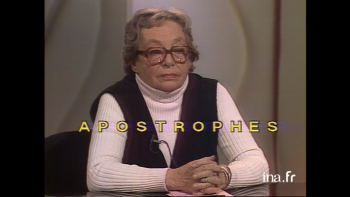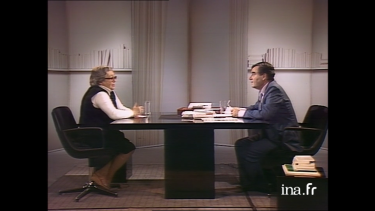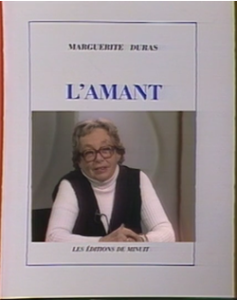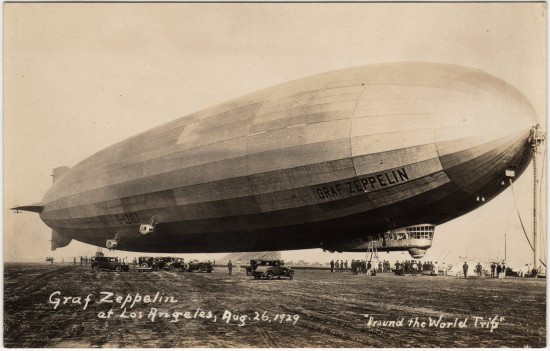Marguerite Duras was a prolific French writer of the 20th century, and her creative outputs take many different forms. Plays, films and cassettes make up part of her repertoire, as well as the more the conventional novels and journalistic articles. Her regular appearances on television and radio made her into a recognisable figure (Hill, 1993). However, her frequent public presence did not necessarily make an understanding of her or her work any easier: both are renowned for being difficult to interpret (Crowley, 2007).

The publication of The Lover, the autobiographical novel that would snare Duras the acclaimed French literature prize Le Prix Goncourt and that would later become a film adaptation, coincided with the interview she gave on the show Apostrophes in 1984. Apostrophes was the creation of its presenter, Bernard Pivot: a pivotal, or Pivot-al, prime-time television show that ran live from 1975 to 1990 interviewing intellectuals. Hugely popular amongst the French public, Pivot and his guests always guaranteed entertaining viewing because of controversial confrontations between the members of the panel (Rieffel, 1993). The Duras appearance on Apostrophes was unique as she appeared solo on the show, (there were normally several intellectual figures). Pivot focused largely on The Lover, but also interviewed about her other works and aspects of her life. During this interview, the proliferation of intermediality, which we can consider as the relationship between two different media (Rippl, 2015), becomes apparent to the point where it becomes hard to separate the figure of Duras herself and a medium used to help weave an incomprehensible story.
The interview on Apostrophes is a chance for Duras to express herself through an audio-visual medium rather than a textual one. But she actually tells Pivot that when she writes, she simply writes the things that come to her, so there probably isn’t too much of a difference between writing and saying the words that occur to her. In fact, Leslie Hill likens Duras’ interviews as being more performances or theatrical exercises (1993), which highlights just how at ease Duras is expressing her stream of consciousness in different ways. Duras’ ability to articulate herself well through various media probably helped her to establish herself in the French public sphere (Hill, 1993). Indeed, she speaks eloquently and poetically when answering Pivot’s questions. For example, when she says:
“ça aurait été pire encore si elle avait appris que sa fille a couché avec un Chinois”
(it would have been even worse if she had found out that her daughter slept with a Chinese man)
Duras stresses the rhyme on “appris” and “fille”, making the words seem rehearsed.

So, Duras favoured intermediality in order to explore her ideas. We see this when Duras does or does not build meaning. During the interview, Duras will say something which the audience will assume to be true, and will then say another thing which directly contradicts the first statement. For example, concerning her political affiliation she says:
“Je suis plus rien….Je suis femme mitterrandienne”
(I’m not anything anymore…I support Mitterrand [1])
Here, she denounces any political links (she was formerly associated with the Communist Party) and then negates that in the next breath when she announces her support for Mitterand. These clashes are typical Durasian qualities – she constantly blurs fact and invention (Hill, 1993). The audience is left confused and trying to decipher which statement is the true one, if either. We could possibly assume then that Duras views truth and fiction as two different media forms. So if a medium is a channel of communication (Rippl, 2015), Duras weaves fact and fiction together to communicate a messy, unapparent message – but why? Perhaps to create a disorientating space which makes the audience/reader/listener think, and realise the notion of there being ‘one truth’ is insufficient (Hill, 1993).
This is an interesting assumption to roll with as it shows how Duras uses intermediality (here the relationship between truth and lie) to create confusion about her feelings towards a certain medium (writing). On Apopstrophes, Duras’ thoughts on writing appear muddled. She states “c’est des livres qui donnent l’envie d’écrire” (books made me want to write), writing words that “m’attaquent” (attack me). She paints herself to be very passive in her own process of writing, which she previously found hellish: “avant [écrire] c’était l’enfer”. However, directly after she says that it is no longer a hell: “mais pas là”. Again conflictingly, she says “il y a des gens qui croient écrire, et des gens qui écrivent” (there are people who think they are writers, and there are people who are writers), giving the impression that she evaluates writing, putting herself into an active, judgmental role. Does she do this to show that she believes that writing isn’t enough to convey an idea? To show writing as a complex art form? We don’t know. But we do know that two media (fact and fiction) are so wound together, we no longer know which one is which, which fits in the belief that there is no one ‘pure’ medium. (Mitchell, 2005).
By blurring media, Duras manages to make her role in writing unclear, and leaves the audience second-guessing her feelings towards herself and her abilities. In this way, does she manage to turn herself into a medium that she employs to distort meaning? For example, some of the interview is focused solely on Duras’s appearance. Pivot broaches the topic using visual, oral and textual media. Visually, we can clearly see her face throughout the interview, and a photo of a younger Duras is shown intermittently throughout. Duras also discusses her appearance, saying how it has changed over time and that now “j’ai un visage détruit” (I have a destroyed face). Textually, Pivot reads out an extract from The Lover, in which “le frère de Prévert” describes Duras’ appearance, saying “vous êtes plus belle maintenant que lorsque vous étiez jeune” (you are more beautiful now than when you were young), objectifying her. All these media are mixed together to discuss Duras’ face so much so that she ends up being ‘othered’. We can see this when an image of Duras’ face is superimposed onto the cover of her book The Lover.

Yes, we do not know if it was the production team’s decision or Duras’ to do so, but either way it demonstrates how she has become a “visual icon” (Hill, 1993), more than just an intellectual figure. Her image no longer belongs just to herself: it has been subjectively commented on by an outsider, and been used as an image for the novel. When she writes or presents herself, she can lend a certain persuasion to the reception it will receive, but she cannot control people’s reactions to an image of her face. This “othering” could be Duras attempting to free herself from her body, an entity she did not view as a site for constructing self-identity, but rather as something to which limiting labels could be attached (Hill, 1993). So, oddly, by being objectified by herself and others, she is freed from being an object. Or at least, that’s a possible conclusion, as Duras and her ideas are renowned for constantly changing and being ambiguous, much like the definition of ‘medium’ itself (Rippl, 2015).
[1] François Mitterand – Socialist President of France at the time this interview aired
Further Reading
All images are stills taken from the interview referenced below. Duras’ quotes likewise.
- Crowley, Martin (2000). Duras, writing and the ethical: making the broken whole. Oxford: Claredon Press. pp1-18, 100-129.
- Duras, Marguerite, (1984). Interview. In: Apopstrophes. Antenne 2. 28 September.
- Duras, M., (1984). L’amant / Marguerite Duras., Paris: Éditions de Minuit.
- Hill, Leslie (1993). Marguerite Duras: Apocalyptic Desires. London: Routlege. Pp1-30.
- Long, Imogen (2013). Women intellectuals in Post-68 France petitions and polemics. Basingstoke: Palgrave Macmillan. Pp1-21,62-70.
- Mitchell, W.T.J. (2005). There Are No Visual Media. Journal of Visual Culture . 4 (2), pp257-266.
- Rieffel, Rémy (1993). La tribu des clercs : les intellectuels sous la Ve République. Paris: Calmann-Lévy. Pp603-611.
- Rippl, Gabrielle. (2015). Introduction. In: Rippl, Gabrielle Handbook of Intermediality: literature – image – sound – music. Berlin: Walter De Gruyter GmbH. pp1-23.





